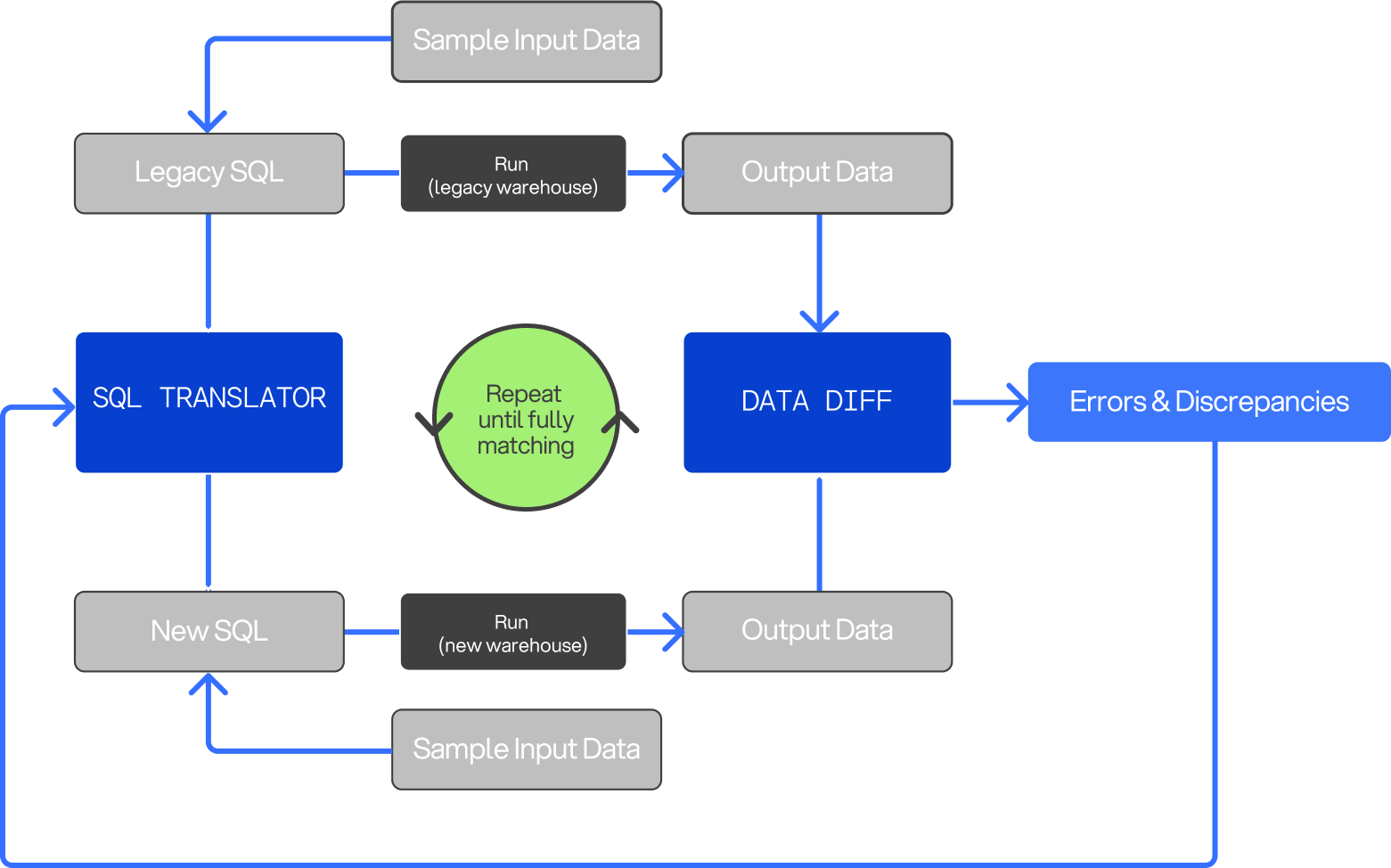How does DMA work?
Datafold performs complete SQL codebase translation and validation using an AI-powered architecture. This approach leverages a large language model (LLM) with a feedback loop optimized for achieving full parity between the migration source and target. DMA analyzes metadata, including schema, data types, and relationships, to ensure accuracy in translation.
Why migrate with DMA?
Unlike traditional deterministic transpilers, DMA offers several distinct benefits:- Full parity between source and target: DMA ensures not just code that compiles, but code that delivers the same results in your new database, complete with explicit validation.
- Flexible dialect handling: DMA can adapt to any arbitrary input/output dialect without requiring a full grammar definition, which is especially valuable for legacy systems.
- Self-correction capabilities: The AI-driven DMA can account for and correct mistakes based on both compilation errors and data discrepancies.
- Modernizing code structure: DMA can convert complex stored procedures into clean, modern formats such as dbt projects, following best practices.
Getting started with DMA
Want to learn more?If you’re interested in diving deeper, please take a moment to fill out our intake form to connect with the Datafold team.
- Connect your source and target data sources to Datafold.
- Provide Datafold access to your codebase, typically by installing the Datafold GitHub/GitLab/ADO app or via system catalog access for stored procedures.
